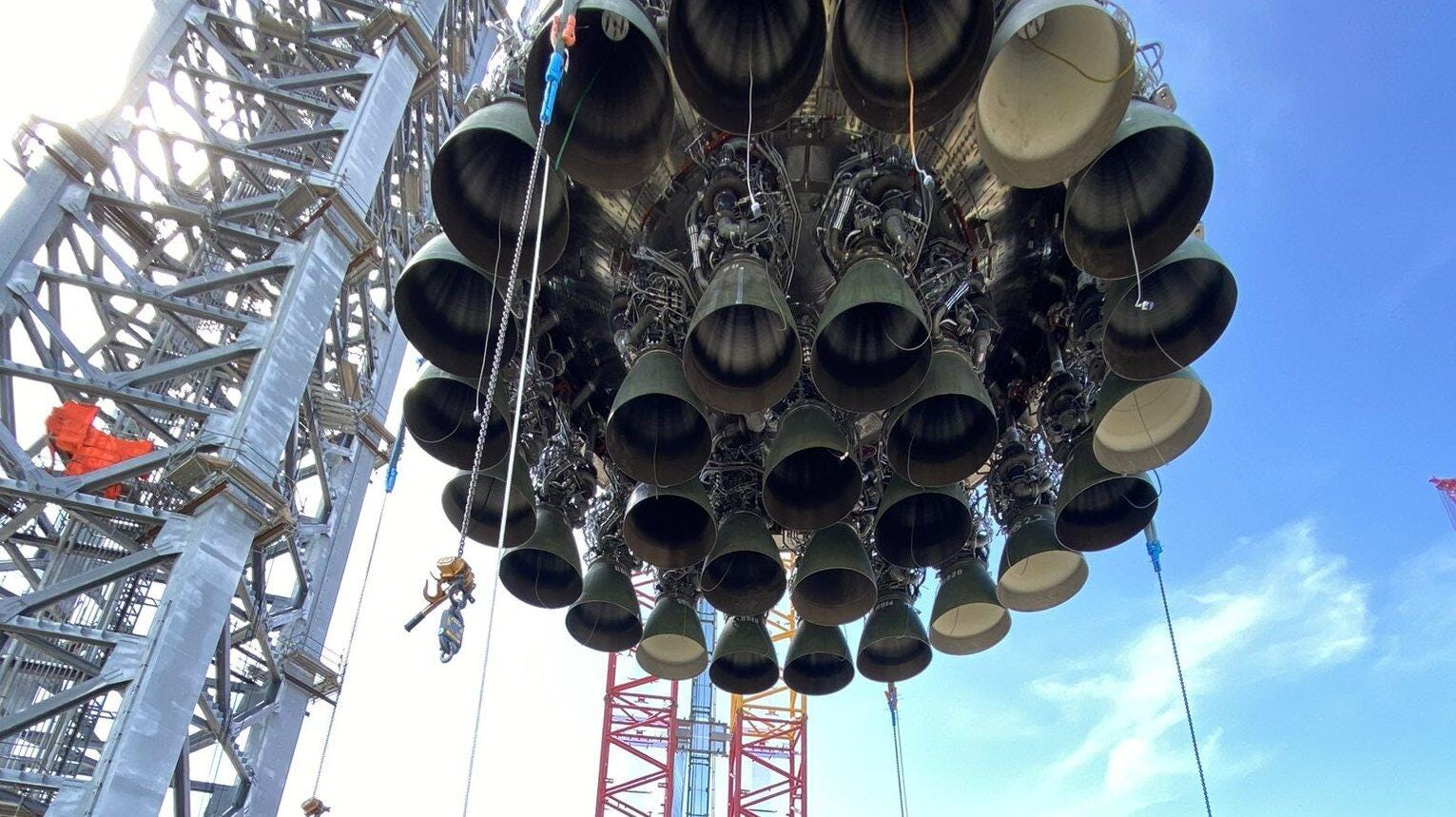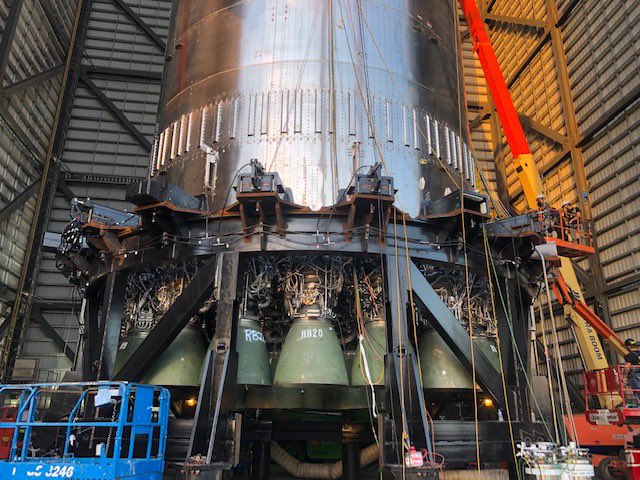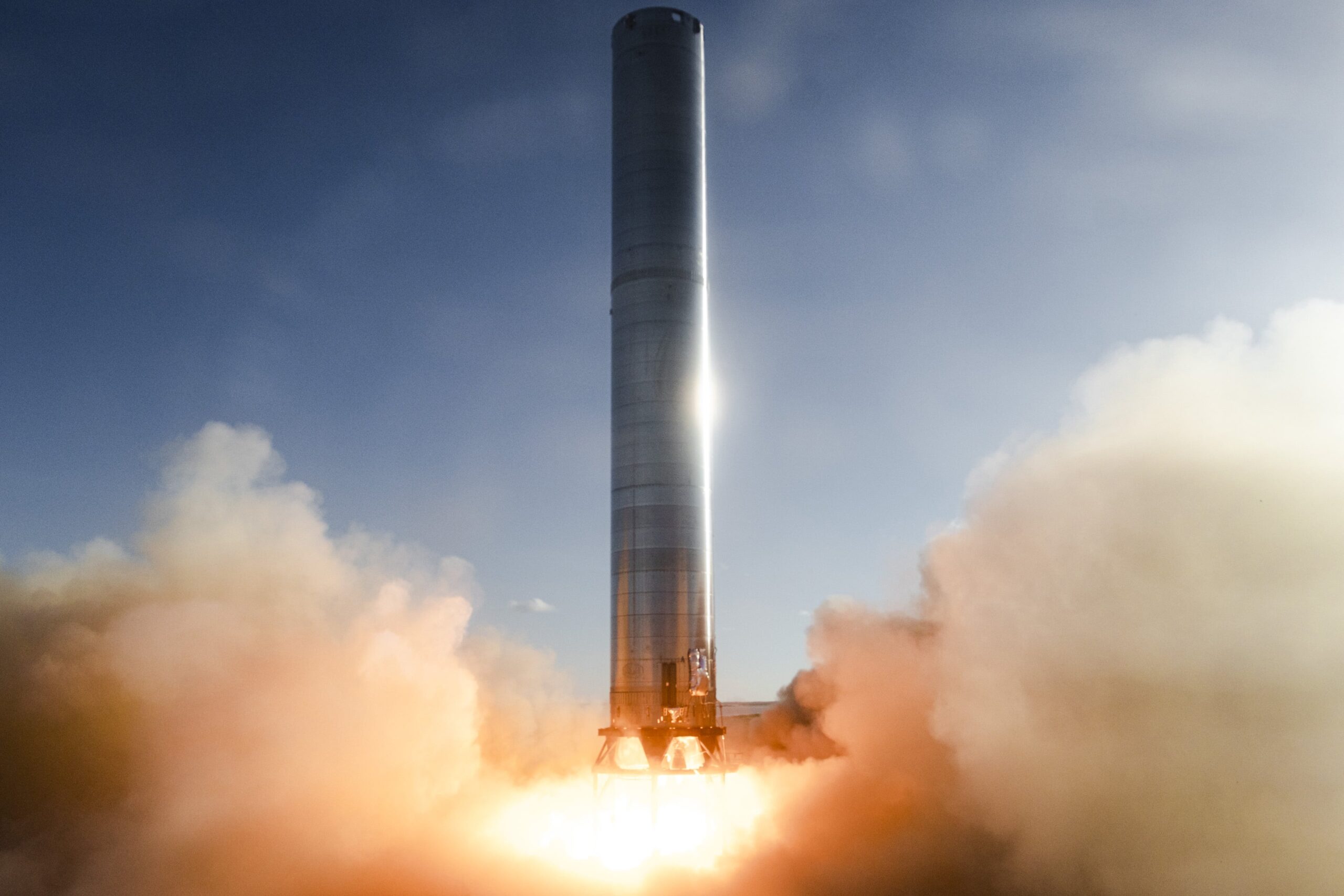
Why SpaceX’s Starship Has So Many Engines
SpaceX’s Starship is unique in a lot of ways including the number of engines it will use. With over 30 engines it can bring up the question of why so many. Especially when you compare it to other powerful rockets like the Saturn V which only had 5.
SpaceX’s Starship has so many engines to simplify the rocket, increase the overall power, help with reusability, consistency, and more. Each reason is why Starship will end up with around 35 Raptor engines on the entire rocket rather than a few very big and powerful engines.
The use of so many engines may seem a lot more complicated but in reality, it’s the other way around. While a full Starship is still yet to be tested, the first orbital test flight is right around the corner. This will not only demonstrate all the unique parts of Starship but also some of the benefits of using so many engines.
How Many Engines Does Starship Have?

Currently, SpaceX is working with a booster and Starship prototype that has 35 raptor engines in total. There are 29 engines on the booster Super Heavy and 6 engines on the Starship upper stage. On the upper stage, there are 3 sea-level Raptor engines and 3 vacuum Raptor engines. The three sea-level engines are responsible for things like the landing burn and more. The vacuum engines however are meant for thrust while in the vacuum of space. These engines are very similar with the exception of a much larger nozzle on the vacuum version. This difference helps the rocket significantly in the vacuum of space rather than within the atmosphere of Earth.
Since the first time SpaceX talked about Starship the amount of engines has changed, specifically on the booster. SpaceX has presented multiple different engine layouts for the booster. Each layout would include different amounts ranging from above to under 30. However, it seems that SpaceX has found a good number at 29. The layout of these 29 Raptors consists of 20 engines in a circle on the outside and 9 engines creating an inner circle with 1 in the very middle. This is the current engine layout for BN4 which will soon be responsible for Starship’s first orbital test flight. It’s possible that SpaceX ends up changing the layout of the engines more in the future as testing goes on.
Benefits Of Having Many Engines
There are a lot of different benefits that come with the use of lots of smaller engines rather than a few big ones. Additionally, there are some reasons why SpaceX is using so many engines on one rocket. These include simplicity, backups, overall power, partial engine use, consistency, and more. Here I will talk about some of the main reasons for SpaceX’s decision.
Simplicity – While building a next-generation rocket engine is by no means simple, building a smaller engine rather than a very large one can be a much easier process. Unfortunately, when building a rocket engine you can’t just scale it up. What I mean by this is if you make the Raptor engine four times as big, it doesn’t mean it will be four times as powerful. Building massive engines like the ones used on the Saturn V or Space Shuttle has its benefits but is also a very complicated and time-consuming process. SpaceX’s decision to work on the Raptor engine has helped them develop it in such a short amount of time. Additionally, they have continued to test the engine and make it more powerful as time goes on.
Backups – Another benefit to having lots of engines is backups. When launching a rocket there is a lot that can go wrong. Specifically losing an engine can be the deciding factor in whether or not a mission is successful. If you only have a few very powerful engines and were to lose one it would not be good. A benefit of having lots of engines is the backups and less significant loss of power. If one out of 29 of Super Heavy’s engines went out it would not be ideal but the additional 28 engines would be capable of keeping the booster on track. One engine out of 29 is only a slight loss of power compared to a possible single-engine loss out of four.
Power – With Starship’s enormous size and cargo predictions the rocket will need a lot of power to get into orbit. While the Raptor engines are extremely powerful, Starship is massive. This is a big reason why the rocket has so many engines. With an estimated payload capacity to low Earth orbit of 100-150 tons, the amount of thrust needed to get that weight into orbit is very high. So high that the booster alone will have almost 30 engines just to get the second stage close to orbit.
Partial Engine Use – This is another unique benefit of having many engines. With so many engines on the booster and second stage, SpaceX is able to control specific sections of engines to exactly fit their thrust needs. An example of this could be the landing burn and landing maneuver for both stages. Starship is planning on only using its three sea-level Raptor engines for landing. Starship having 6 engines on the upper stage means SpaceX can gimbal three and have the right amount of thrust needed for landing. One problem with a lot of rocket engines is thrust control. It’s hard for many engines to have partial thrust such as lower than 30%. This makes the reusability process a lot more complicated and makes having a lot of engines very beneficial. SpaceX can use a specific amount of engines on both stages and get very close to the exact amount of thrust needed for things like a landing burn.
Same Engines On Both Stages – This ties in with the simplicity aspect of using a lot of smaller engines. Starship will have the same engines on the first stage and second stage. With the exception of the vacuum Raptors being slightly modified for space, the engines are practically exactly the same. This helps simplify the process significantly for SpaceX. Rather than work on two different types of engines for both the booster and the second stage, the company can put all its effort into one. This speeds up the production time and makes the process a lot easier from start to finish.
Downsides Of Many Engines

While there are a lot of benefits to using many engines there are a few downsides. One of the biggest downsides is less reliability. While Starship will have many engines there to help if one stops working, the increased amount of engines increases the chance of something going wrong. SpaceX and Starship are more likely than other rockets that only have a few engines for some to possibly cut out or stop working. In addition, larger rocket engines have often been a bit more reliable overall than smaller ones.
Conclusion
With almost 30 engines on the booster alone, Starship will have a lot of engines altogether. However, SpaceX did this for a reason. A large amount of engines helps with simplicity, backups, overall power, partial engine use, consistency, and more. Each reason helped SpaceX make the decision when working on their Raptor engine. While there are a few downsides to a large number of engines the pros outweigh the cons. SpaceX has changed the number of engines multiple times but settled on 29 for BN4. With the first orbital test flight very soon we will see exactly what it’s like when 29 Raptor engines fire at once.
